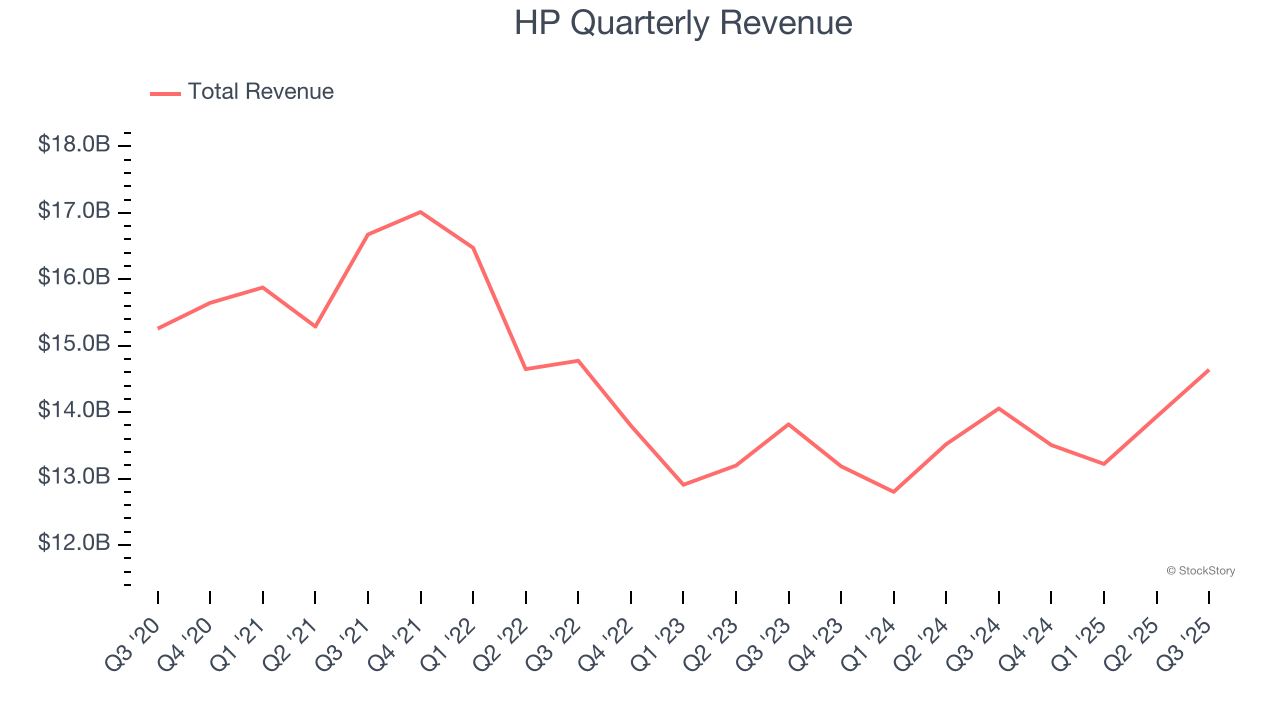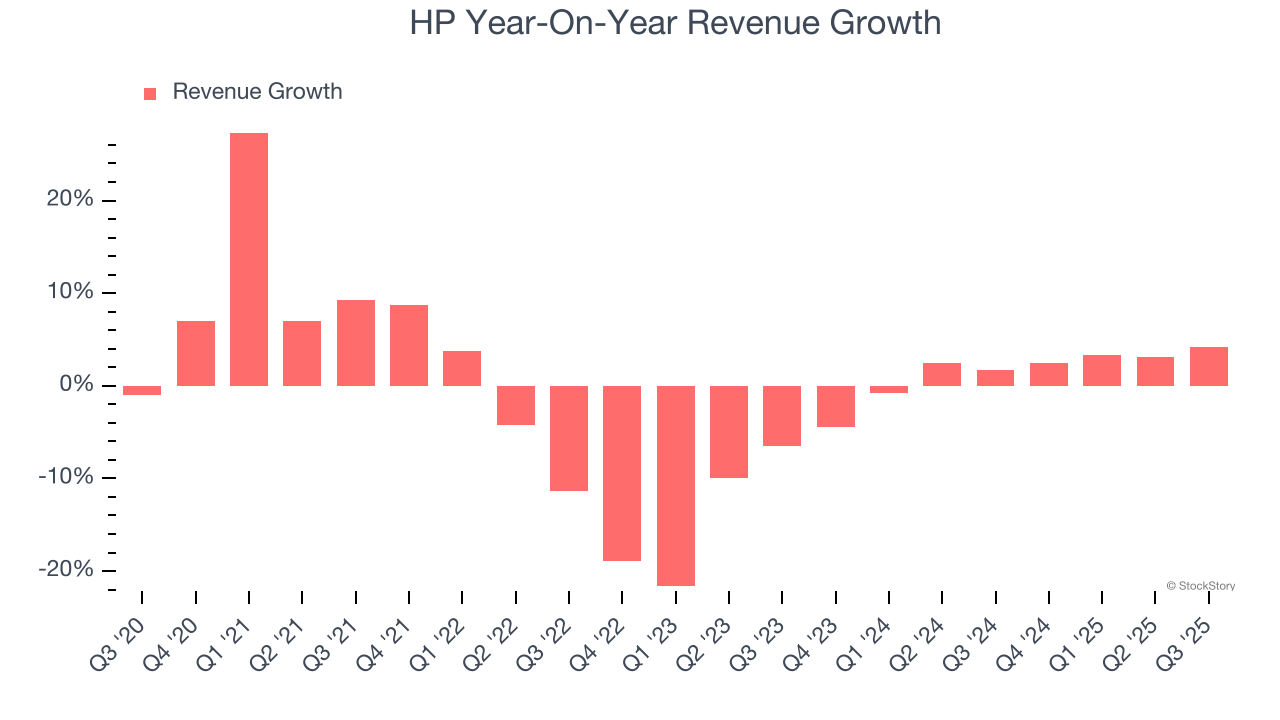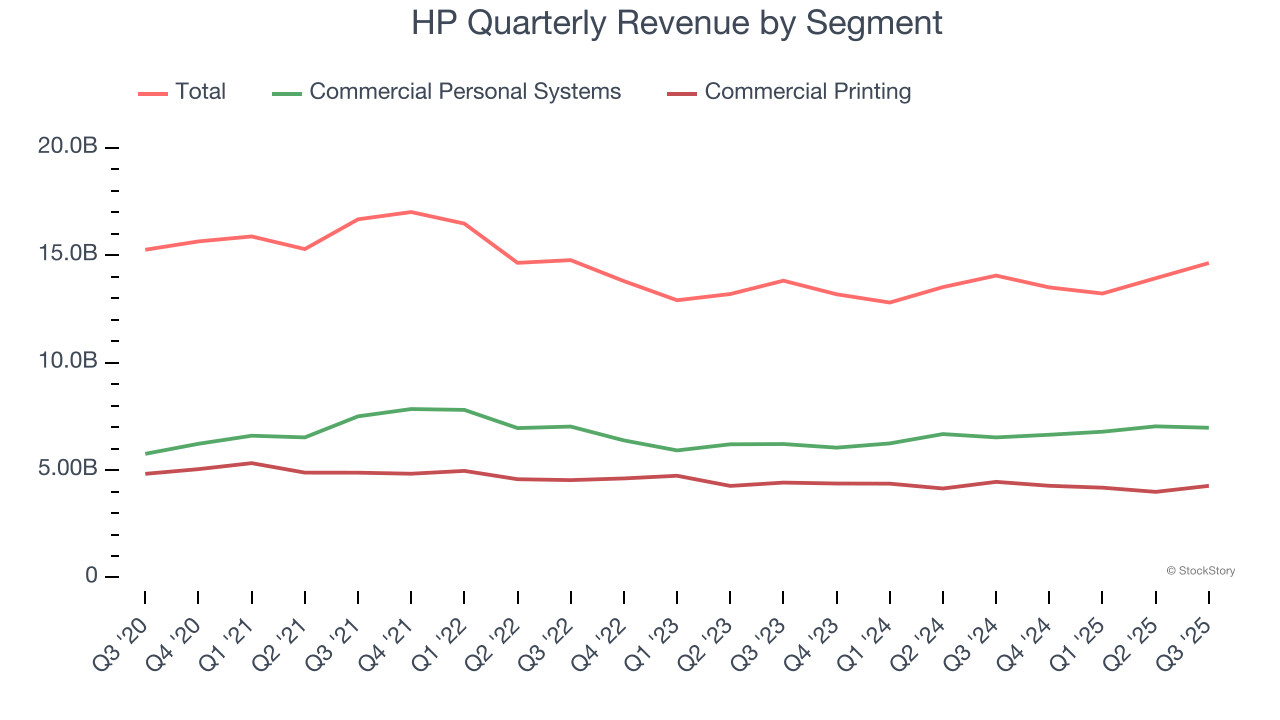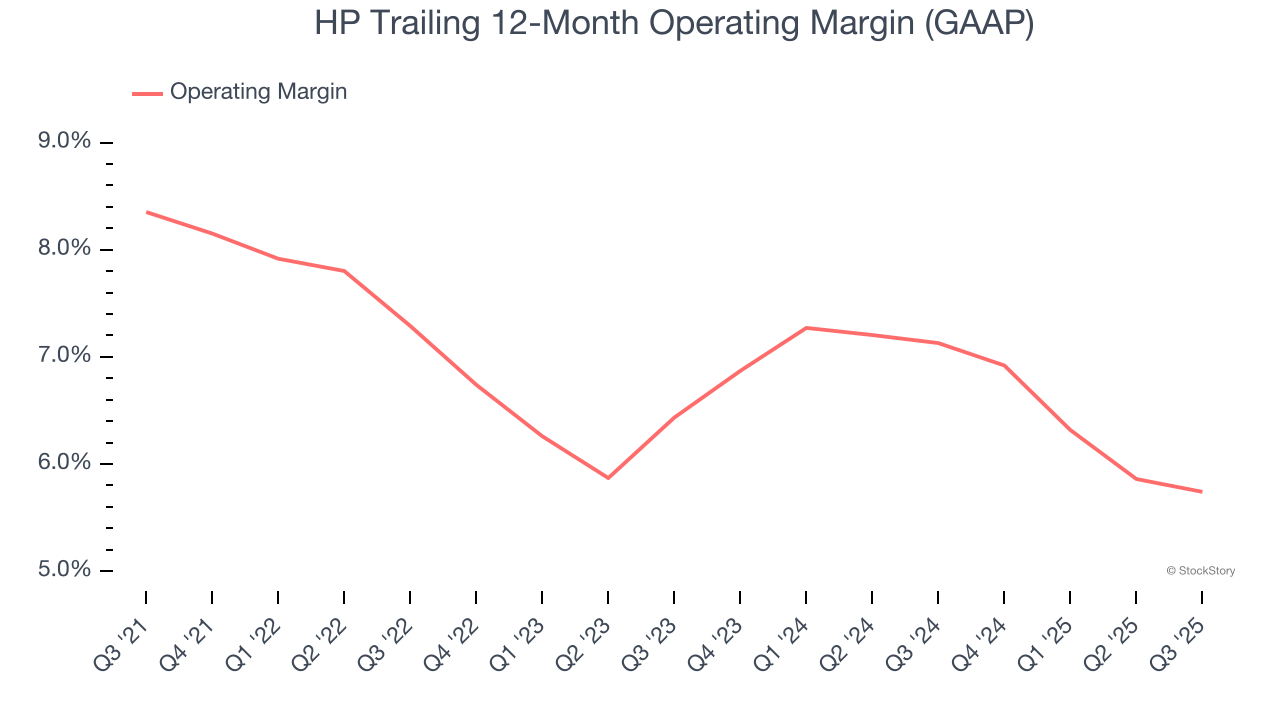|
|
|

|
|||||

|
|

Personal computing and printing company HP (NYSE:HPQ) reported revenue ahead of Wall Streets expectations in Q3 CY2025, with sales up 4.2% year on year to $14.64 billion. Its non-GAAP profit of $0.93 per share was in line with analysts’ consensus estimates.
Is now the time to buy HP? Find out by accessing our full research report, it’s free for active Edge members.
"HP’s strategy to lead the Future of Work continues to deliver strong performance, marked by our sixth consecutive quarter of revenue growth,” said Enrique Lores, President and CEO of HP Inc.
Born from the legendary Silicon Valley garage startup founded by Bill Hewlett and Dave Packard in 1939, HP (NYSE:HPQ) designs and sells personal computers, printers, and related technology products and services to consumers, businesses, and enterprises worldwide.
Reviewing a company’s long-term sales performance reveals insights into its quality. Any business can have short-term success, but a top-tier one grows for years.
With $55.3 billion in revenue over the past 12 months, HP is a behemoth in the business services sector and benefits from economies of scale, giving it an edge in distribution. This also enables it to gain more leverage on its fixed costs than smaller competitors and the flexibility to offer lower prices. However, its scale is a double-edged sword because finding new avenues for growth becomes difficult when you already have a substantial market presence. To accelerate sales, HP likely needs to optimize its pricing or lean into new offerings and international expansion.
As you can see below, HP struggled to increase demand as its $55.3 billion of sales for the trailing 12 months was close to its revenue five years ago. This shows demand was soft, a rough starting point for our analysis.

Long-term growth is the most important, but within business services, a half-decade historical view may miss new innovations or demand cycles. HP’s annualized revenue growth of 1.5% over the last two years is above its five-year trend, but we were still disappointed by the results.

HP also breaks out the revenue for its most important segments, Commercial Personal Systems and Commercial Printing, which are 47.6% and 29.1% of revenue. Over the last two years, HP’s Commercial Personal Systems revenue (desktops, laptops, etc.) averaged 5.5% year-on-year growth. On the other hand, its Commercial Printing revenue (commercial or industrial printers) averaged 3.7% declines.

This quarter, HP reported modest year-on-year revenue growth of 4.2% but beat Wall Street’s estimates by 0.7%.
Looking ahead, sell-side analysts expect revenue to grow 1.8% over the next 12 months, similar to its two-year rate. This projection doesn't excite us and indicates its newer products and services will not catalyze better top-line performance yet.
The 1999 book Gorilla Game predicted Microsoft and Apple would dominate tech before it happened. Its thesis? Identify the platform winners early. Today, enterprise software companies embedding generative AI are becoming the new gorillas. a profitable, fast-growing enterprise software stock that is already riding the automation wave and looking to catch the generative AI next.
Operating margin is one of the best measures of profitability because it tells us how much money a company takes home after subtracting all core expenses, like marketing and R&D.
HP was profitable over the last five years but held back by its large cost base. Its average operating margin of 7% was weak for a business services business.
Looking at the trend in its profitability, HP’s operating margin decreased by 2.6 percentage points over the last five years. HP’s performance was poor no matter how you look at it - it shows that costs were rising and it couldn’t pass them onto its customers.

In Q3, HP generated an operating margin profit margin of 6.6%, in line with the same quarter last year. This indicates the company’s overall cost structure has been relatively stable.
We track the long-term change in earnings per share (EPS) for the same reason as long-term revenue growth. Compared to revenue, however, EPS highlights whether a company’s growth is profitable.
HP’s EPS grew at an unimpressive 6.6% compounded annual growth rate over the last five years. This performance was better than its flat revenue but doesn’t tell us much about its business quality because its operating margin didn’t improve.

Diving into the nuances of HP’s earnings can give us a better understanding of its performance. A five-year view shows that HP has repurchased its stock, shrinking its share count by 30.1%. This tells us its EPS outperformed its revenue not because of increased operational efficiency but financial engineering, as buybacks boost per share earnings.

Like with revenue, we analyze EPS over a shorter period to see if we are missing a change in the business.
For HP, its two-year annual EPS declines of 2.8% show it’s continued to underperform. These results were bad no matter how you slice the data.
In Q3, HP reported adjusted EPS of $0.93, in line with the same quarter last year. This print was close to analysts’ estimates. Over the next 12 months, Wall Street expects HP’s full-year EPS of $3.13 to grow 5.2%.
It was good to see HP narrowly top analysts’ revenue expectations this quarter. On the other hand, its full-year EPS guidance missed and its EPS guidance for next quarter fell slightly short of Wall Street’s estimates. Overall, this quarter could have been better. The stock traded down 5.8% to $22.92 immediately after reporting.
HP’s latest earnings report disappointed. One quarter doesn’t define a company’s quality, so let’s explore whether the stock is a buy at the current price. When making that decision, it’s important to consider its valuation, business qualities, as well as what has happened in the latest quarter. We cover that in our actionable full research report which you can read here, it’s free for active Edge members.
| Dec-15 | |
| Dec-12 | |
| Dec-11 | |
| Dec-11 | |
| Dec-10 | |
| Dec-09 | |
| Dec-08 | |
| Dec-08 | |
| Dec-08 | |
| Dec-05 | |
| Dec-04 | |
| Dec-03 | |
| Dec-03 | |
| Dec-03 | |
| Dec-03 |
Join thousands of traders who make more informed decisions with our premium features. Real-time quotes, advanced visualizations, backtesting, and much more.
Learn more about FINVIZ*Elite